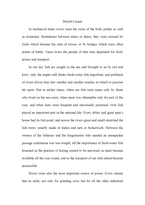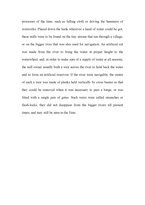영문 BritishCanal영국의 운하)영어작문
In mediaeval times rivers were the veins of the body politic as well as economic. Boundaries between states or shires, they were crossed by fords which became the sites of towns, or by bridges which were often points of battle. Upon rivers the people of that time depended for food, power and transport.
In our day fish are caught in the sea and brought to us by rail and lorry; only the angler still thinks fresh-water fish important, and pollution of rivers drives him into smaller and smaller reaches in which to practise his sport. But in earlier times, when sea fish were eaten only by those who lived on the sea coast, when meat was obtainable only for part of the year, and when fasts were frequent and universally practised, river fish played an important part in the national life. Every abbey and great mans house had its fish pond, and across the rivers great and small stretched the fish weirs, usually made of stakes and nets or basketwork. Between the owners of the fisheries and the bargemaster who needed an unimpeded passage continuous war was fought, till the importance of fresh-water fish lessened as the practice of fasting ceased to be universal, as meat became available all the year round, and as the transport of sea fish inland became practicable.
Rivers were also the most important source of power. Every stream had its mills, not only for grinding corn, but for all the other industrial processes of the time, such as fulling cloth or driving the hammers of ironworks. Placed down the bank wherever a head of water could be got, these mills were to be found on the tiny stream that ran through a village, or on the bigger river that was also used for navigation. An artificial cut was made from the river to bring the water at proper height to the waterwheel, and, in order to make sure of a supply of water at all seasons, the mill owner usually built a weir across the river to hold back the water and so form an artificial reservoir. If the river were navigable, the centre of such a weir was made of planks held vertically by cross beams so that they could be removed when it was necessary to pass a barge, or was fitted with a single pair of gates. Such weirs were called staunches or flash-locks; they did not disappear from the bigger rivers till present times, and may still be seen in the Fens.





 분야
분야


